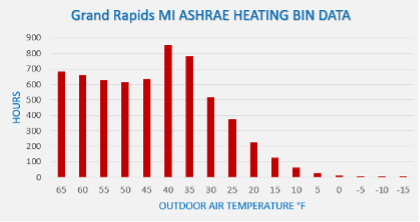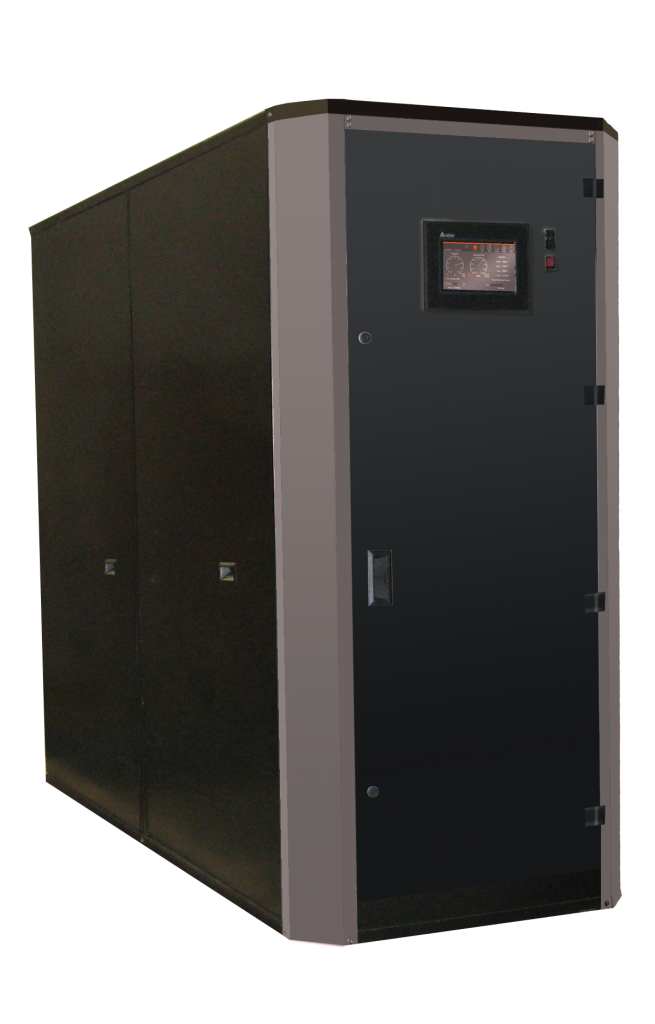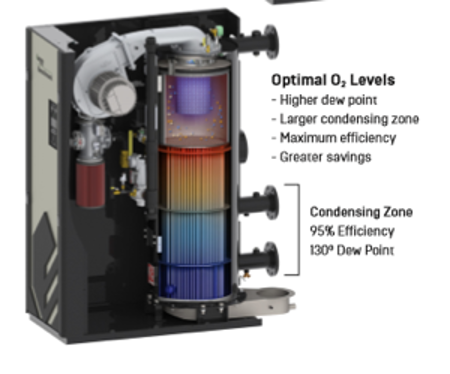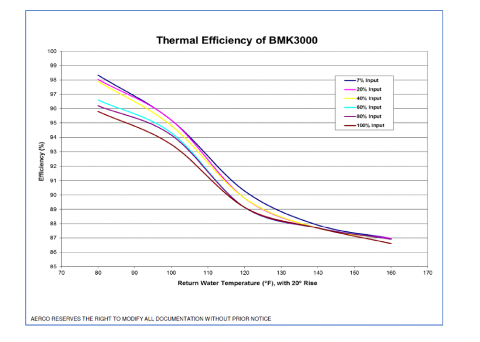 An engineer uses larger temperature differences and deep reset when designing a condensing hydronic heating system. The design may utilize staging of multiple boilers in lieu of a single boiler for the full load. The system may also have a unique blend of higher and lower temperature terminal units which may take advantage of a dual return boiler plant. Today, in our final article of the four part series on Condensing Heating System Efficiency, we look at these two options and the energy savings vs. first cost considerations.
An engineer uses larger temperature differences and deep reset when designing a condensing hydronic heating system. The design may utilize staging of multiple boilers in lieu of a single boiler for the full load. The system may also have a unique blend of higher and lower temperature terminal units which may take advantage of a dual return boiler plant. Today, in our final article of the four part series on Condensing Heating System Efficiency, we look at these two options and the energy savings vs. first cost considerations.
The engineer is designing a hydronic system. Assume the owner wants a standby boiler. Should the engineer look at a single boiler with a standby or three or four smaller boilers? The answer is a combination of energy and first cost considerations.
Turndown Ratio in Boilers
The first thing to consider is the turndown ratio of the boiler. Turndown is the ratio or percent of lowest firing rate to full firing rate of the boiler. Once the boiler gets to the minimum firing rate, the boiler will start to cycle on and off. Now the stainless-steel heat exchanger will have to be heated back up to temperature due to post and pre-purge cycles. This wastes a lot of energy. The hourly boiler efficiency can drop by 10 to 15% due to cycling many times per hour. Here are two past articles you may want to review.
What is Turndown? Turndown Ratio in Condensing Water Tube vs. Fire Tube Boilers (Part 1 of 2)
Turndown in water tube vs. firetube boilers. Turndown Ratio in Condensing Water Tube vs. Fire Tube Boilers (Part 2 of 2)
So, the first consideration in staging is whether the heating system design will avoid cycling losses. Do not forget to make the analysis by removing any safety factors or future capacity included in the load calculation. After that, it is the usual issues of space and first cost vs. operating cost.
Why Stage Multiple Boilers at Lower Firing Rates?
Look at the graph shown at the start of this blog. Firing a boiler at part load can increase the efficiency by 1 – 2% depending on temperature. Assume the design load is 2,600,000 BTUH. Now assume that on a warmer day the load required is 80% of the design or about 2,000,000 BTUH. A single boiler with a return temperature of 120⁰F will be 89% efficient. Now we have three boilers at 1,500,000 BTUH each and we operate them all at the same time for the same load. Now each boiler is operating at about 700,000 BTUH or about 26% of the design. The efficiency is close to 90%. The gain is simply based on how you operate the boilers.
First Cost vs. Energy Savings – A Question We Always Get
What about the first cost of the boiler plant? If you read part 2 of this series, Delta T Can Improve Boiler Efficiency, we recommended stretching the system temperature difference as much as you can. This will raise the ΔT and lower the flow rate. The result is smaller pumps (😭 ) and smaller pipe sizes. This will save first cost.
The boiler cost will depend on the number of boilers and the installation of them. Here is an example in Grand Rapids. Assume we are looking at a N+1 plant with an input load of 6,000,0000 BTUH.
The owner has enjoyed Bryan flex tube boilers in the past. You select a couple of Bryan Free Flex FF-6000 condensing boilers with a 20:1 turndown. The 20:1 allows you to avoid cycling with the single boiler.
Assume the two boilers are $135,000* each or $270,000* for two. The contractor will install two boilers with full pipe size which we will assume is 6-inch.
You are using temperature reset so the water tube boiler minimum flow of 114 GPM fits well in this primary variable system.
* Pricing is inflated and approximate. It is for demonstration purposes only.
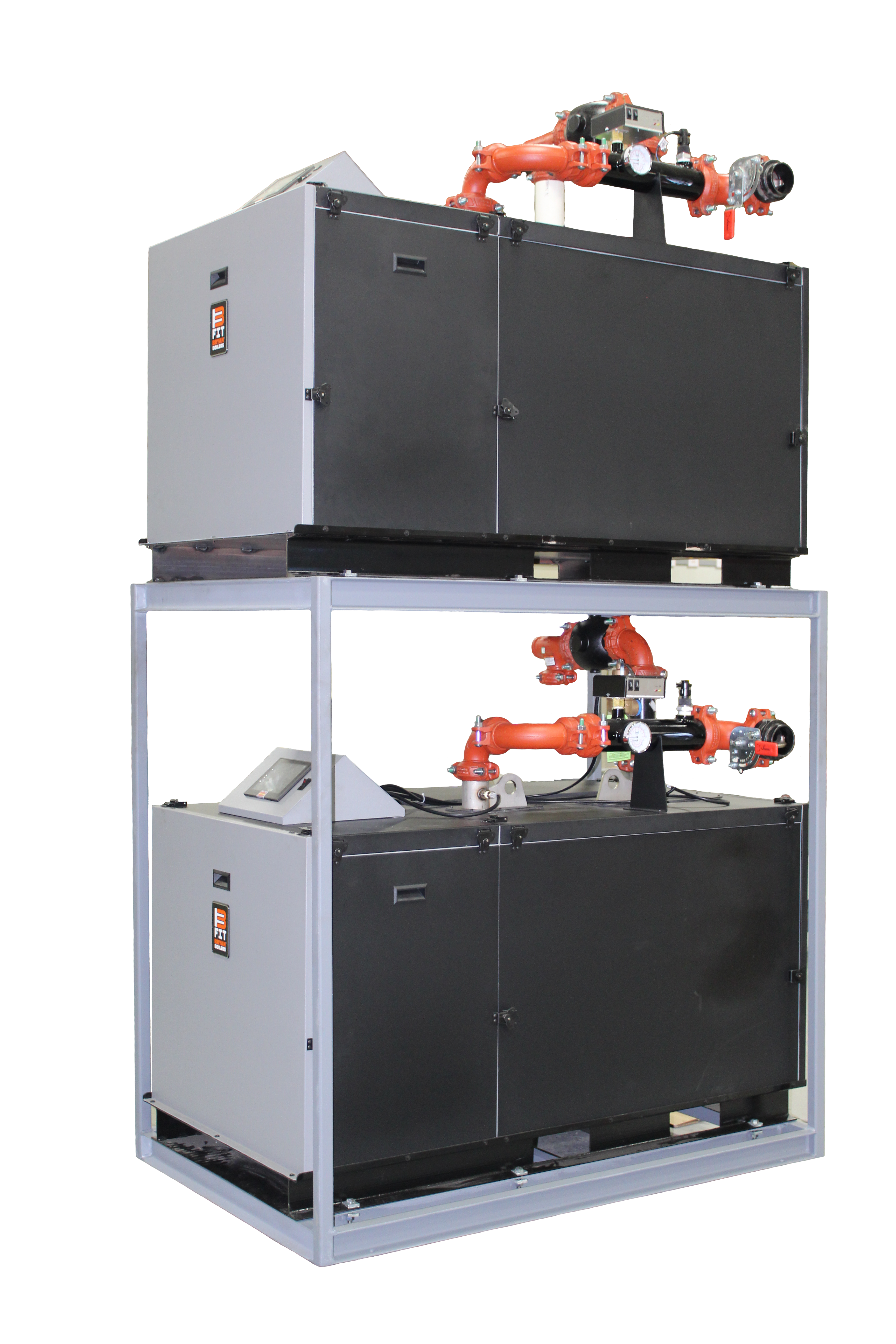 What happens if you look at four smaller, lower cost, boilers? One option including N+1 would be four Thermal Solutions AMP-2000 condensing boilers. These boilers may be racked and will save space in the mechanical room. They will require a primary secondary (P-S) piping setup.
What happens if you look at four smaller, lower cost, boilers? One option including N+1 would be four Thermal Solutions AMP-2000 condensing boilers. These boilers may be racked and will save space in the mechanical room. They will require a primary secondary (P-S) piping setup.
These boilers will be $36,000* each or $144,000* for the four. Even with racking and P-S pumps, the boiler first cost is almost 30% less. The piping will be 3-inch and the minimum flow rate will be met due to the P-S piping. There is more piping, but it is a smaller size.
The boiler plant would still have a 20:1 turndown. The boilers are smaller and will fit through a door if a boiler must be replaced in the future.
* Pricing is inflated and approximate. It is for demonstration purposes only.
The engineer decides to create an alternate design bid for the four smaller boilers. This will afford a discussion about the first cost savings and energy saved.
What is a Dual Return Condensing Boiler?
One last tool for the engineer’s toolbox is the dual return boiler. The Aerco Benchmark Platinum is a splendid example of this. This can help when you have a large percent of low temperature returns, coupled with a need for higher temperatures in part of the system.
Visit our previous Monday Morning Minutes shown here for more information:
Condensing Boilers – Use Dual Returns for Greater Energy Savings
Top 6 Dual Return Condensing Boiler Opportunities for Enhanced Savings
Using a step-by-step process to design a condensing hydronic heating system will make the best use of the owner’s investment in boilers. The suggestions from this four-part series will save the owner thousands of dollars in operating cost.
Read the rest of this series:
What is the Efficiency of my Installed Condensing Boiler? (Part 1 of 4)
Hydronic System Design – High Delta T Can Improve Boiler Efficiency (Part 2 of 4)
Condensing Boiler Temperature Reset for Increased Efficiency (Part 3 of 4)


